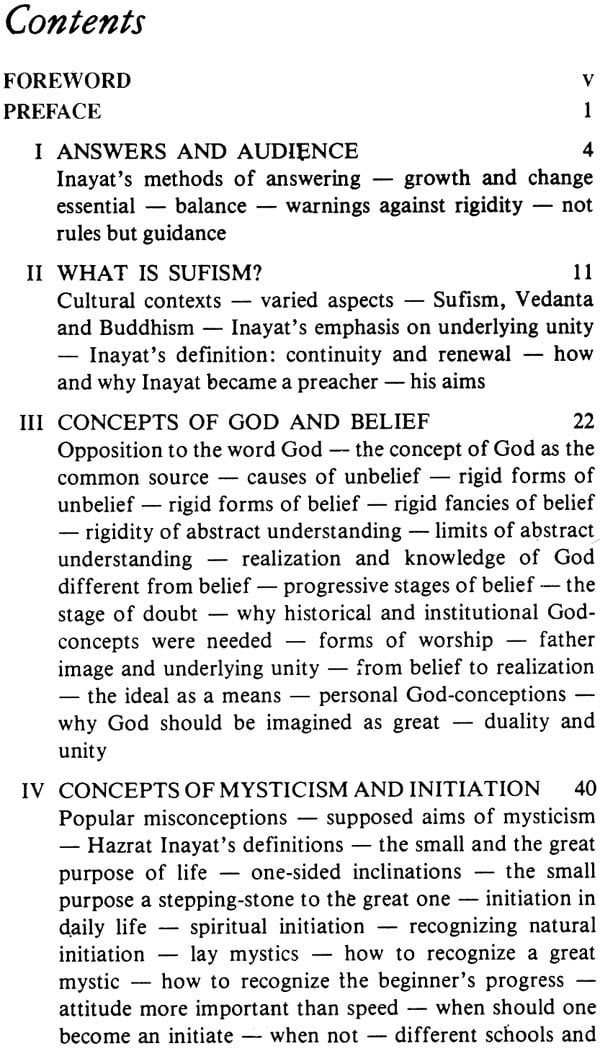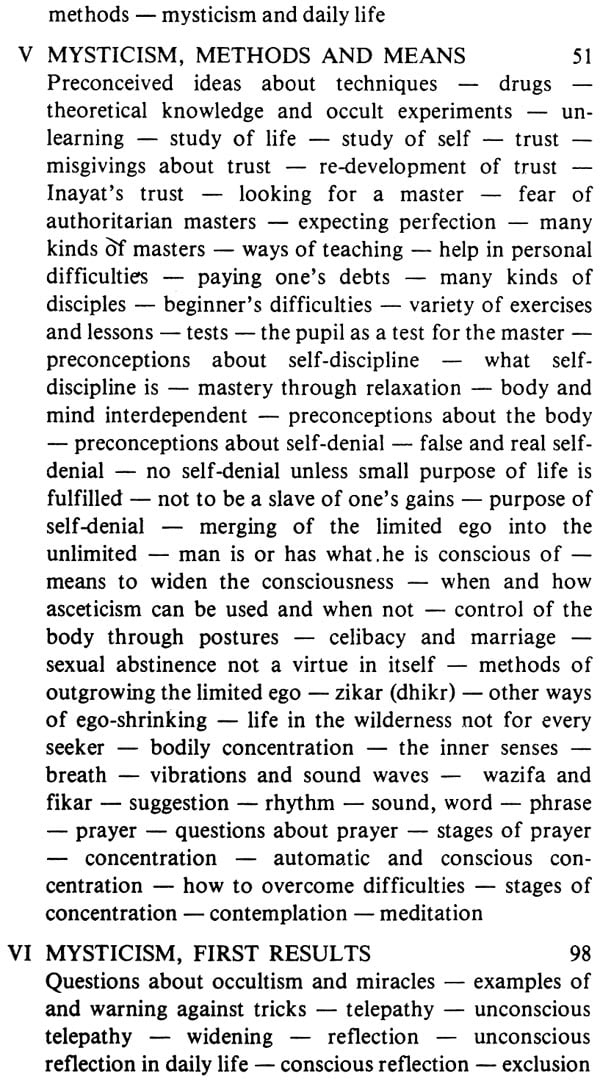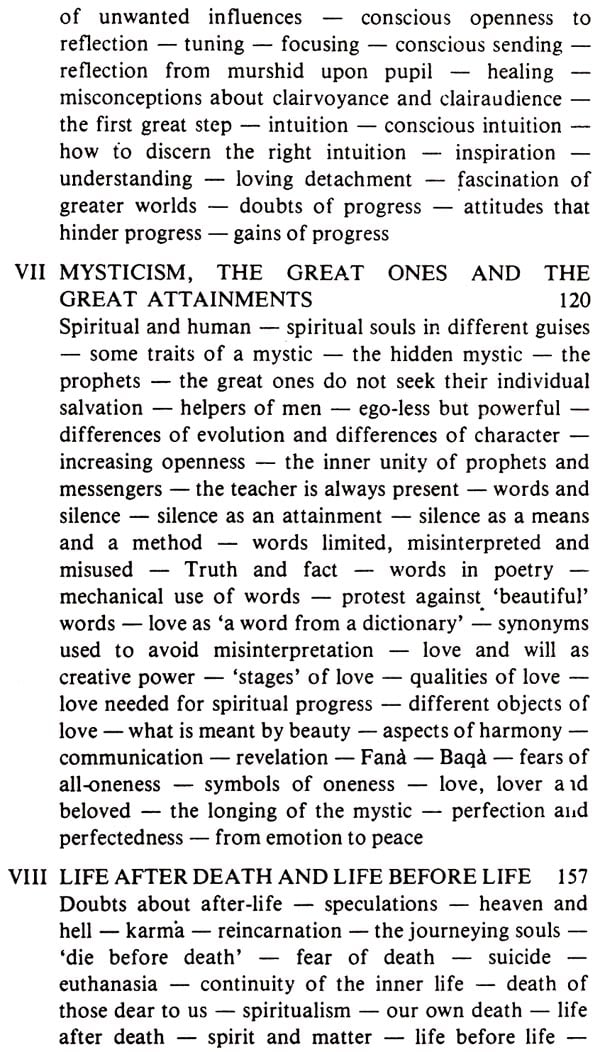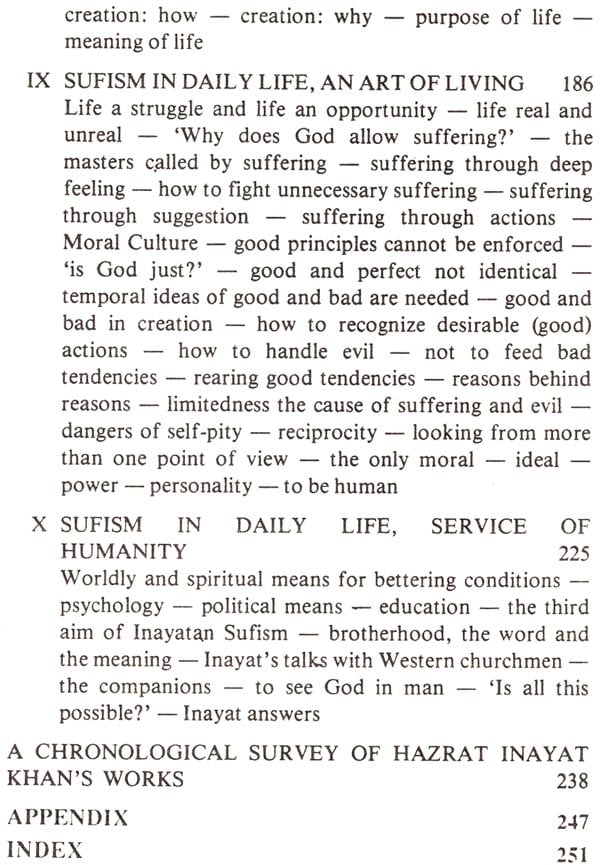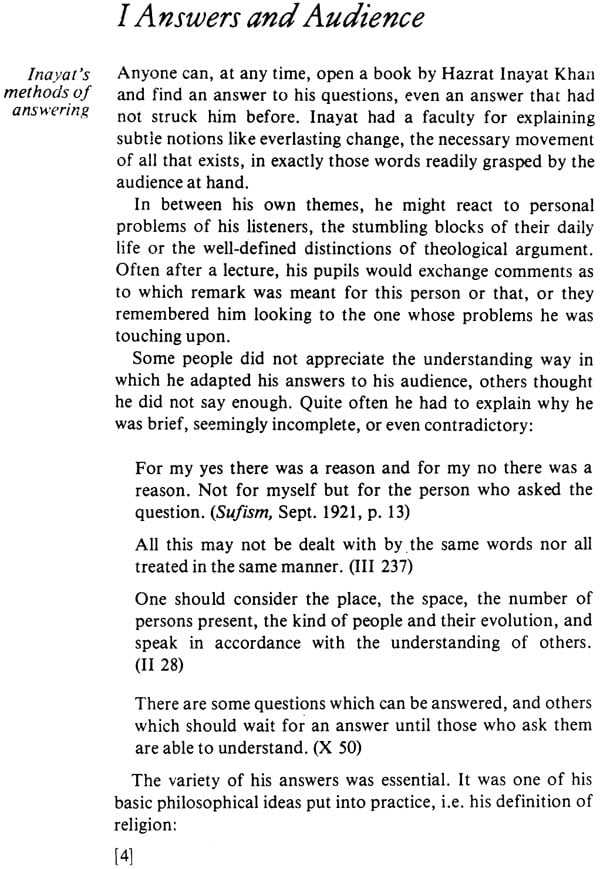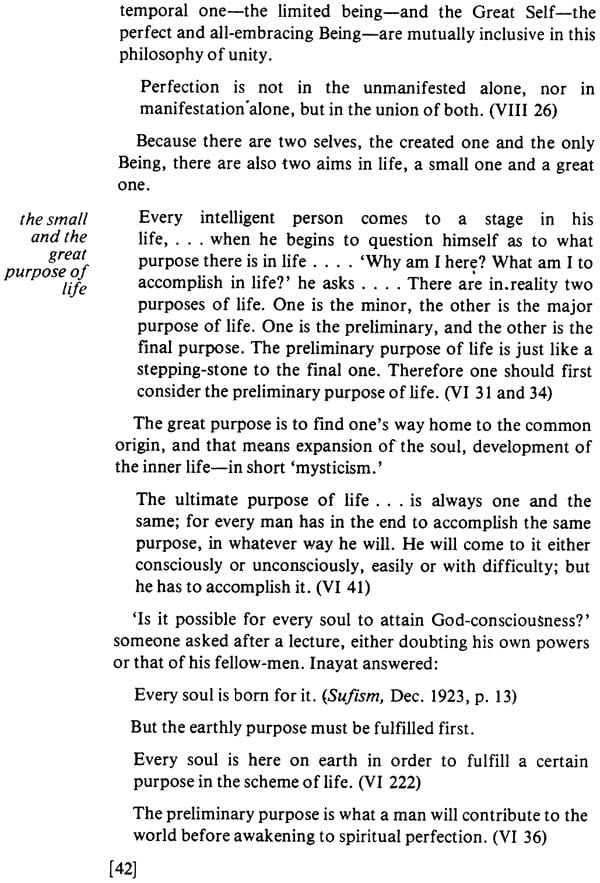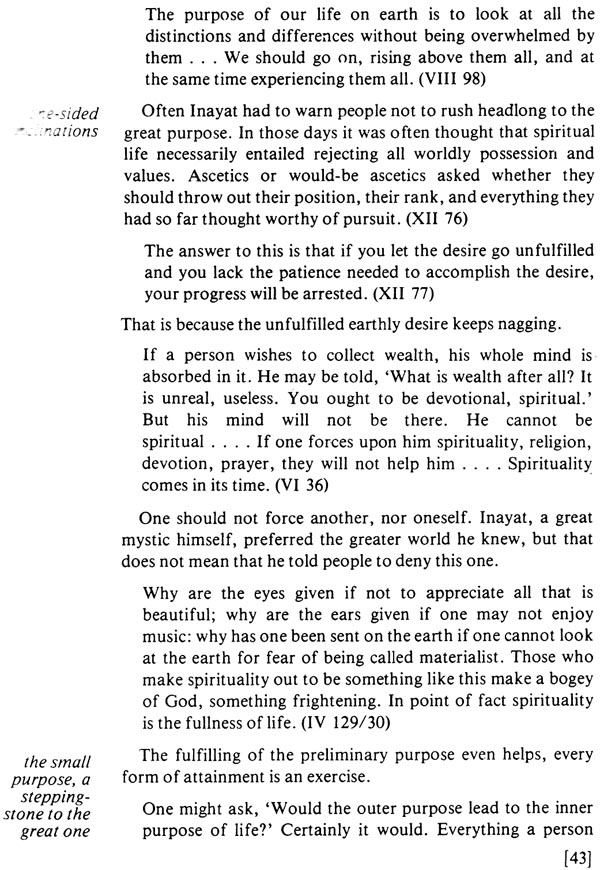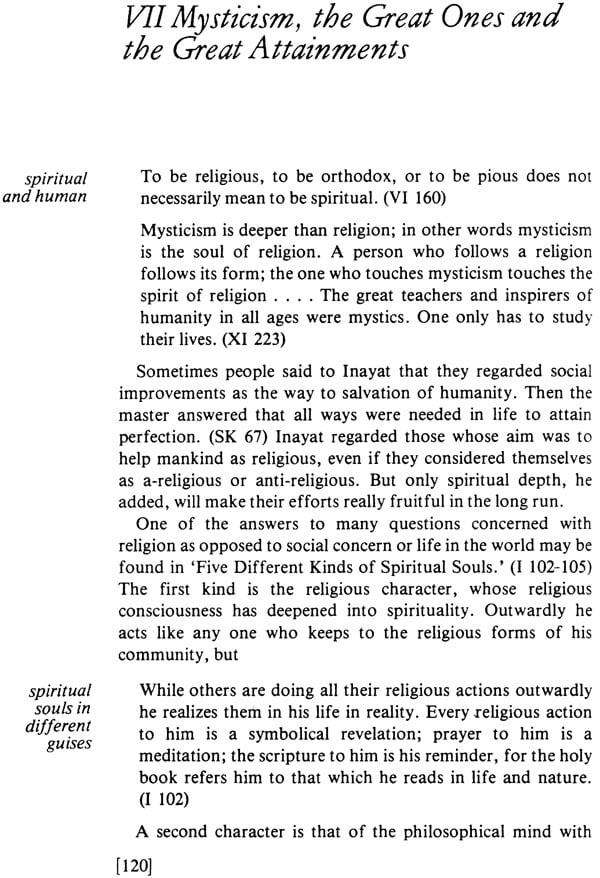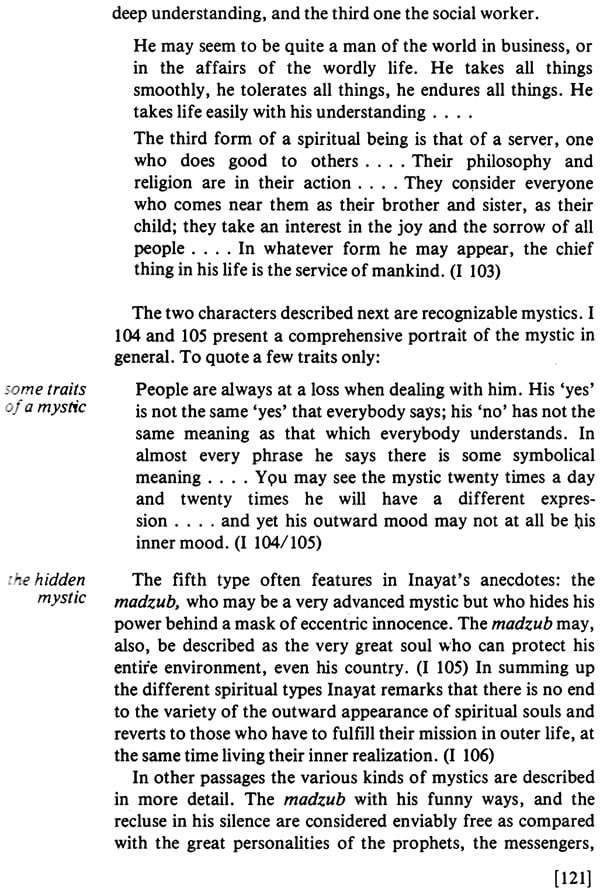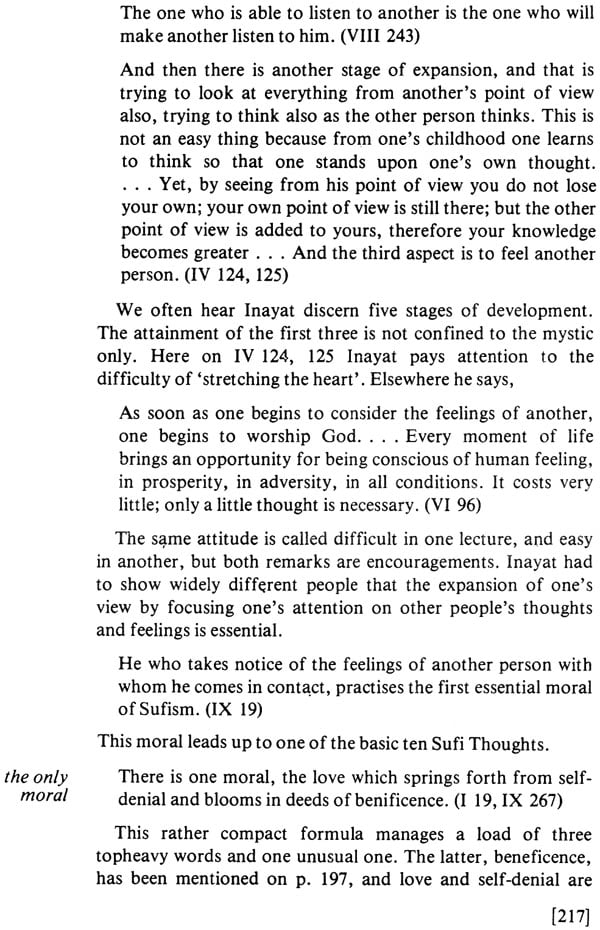
A Sufi Master Answers: On the Sufi Message of Hazrat Inayat Khan (An Old and Rare Book))
Book Specification
| Item Code: | NAT509 |
| Author: | Dr. Elisabeth Keesing |
| Publisher: | Motilal Banarsidass Publishers Pvt. Ltd. |
| Language: | ENGLISH |
| Edition: | 2008 |
| ISBN: | 9788120814349 |
| Pages: | 262 |
| Cover: | PAPERBACK |
| Other Details | 8.50 X 5.50 inch |
| Weight | 320 gm |
Book Description
When my publisher and several readers suggested that I might write a book on Hazrat Inayat Khan’s ideas as a complement to the story of his life, I was at first inclined to say no. Inayat had a rare gift to distribute his knowledge and experience in such parcels and in such a way as those before him needed and could understand. This method of lecturing, and his own strong personality, gave everything he said an extra dimension which a mere exposition of ideas would lack.
Putting this objection into words showed the way to its solution. I should cite Inayat’s answers to questions, and these questions I could arrange systematically, thus sketching an outline of his philosophy and aims, at the same time showing as much of his personality and the way he spoke as the written word can convey.
This method presented difficulties of its own. To begin with, there was the amount of source material, even excluding the non-published courses for pupils. As can be deduced from the survey of Hazrat Inayat Khan’s work on page 238, out of thousands of pages I had to choose a restricted number of characteristic answers. I have tried to select the essential recurrent themes.
A further difficulty arises from the fact that most of Inayat’s recorded answers were given to laymen of the 1910-1920 period: either pupils or a chance audience consisting of dogmatists, occultists, Schongeister, agnostics or dreamers, many of them theosophists or marginal Protestants. These listeners, dedicatedly romantic or content in their rationalism, echoed a different mood than the unsatisfied escapists or critical searchers of today. out of respect to historical fact I had to leave in some problems typical of those years, but I have concentrated on questions still raised today, especially in the West.
Then as now Europeans and Americans consider the East as the source of mysticism but tend to interpret what they find according to their own cultural context. That is why Inayat, before expanding on a subject, often had to draw attention to preconceived ideas and conventional notions. In consequence, some paragraphs in the present book open with what he called un-leaning. To avoid further such biased mental associations, but also with a view to the general reader, I have made sparing use of standard theological or philosophical terms. Similarly, I teaching, apart from the few occasions when such a comparison was inherent in the subject.
Most subjects were lectured on more than once by Inayat, very much in the way of the Indian classical composer and poet-musician he originally was: he chose a theme and improvised on it according to inspiration and circumstances. Two lectures under the same title have intrinsically the same contents, but differ in tone, form and elaboration. For this survey either the shortest or most striking quotation has been chosen. After an initial attempt to give nothing but quotations, I saw that some commentary and connecting text were indispensable, but I have endeavoured to keep these as brief as possible.
Of some books and chapters only a short resume is given, and in several quotations either a few words are omitted (indicated by three dots) or one or more sentences (indicated by four dots), in order to avoid repetitions and elucidations that would take too far from the subject at hand. The omission of interjections or conjunctions is not marked for the sake of legibility. The original source is indicated directly after each quotation. III 75 means: volume three of the collected work Sufi Message. The same system is used for some quotations from the reminiscences of Inayat’s pupils and others who met him, as collected by Mrs Smit-Kerbert. SK 3 means Smit-Kerbert Collection number three. Other titles are not abbreviated and quotations from other books than Hazrat Inayat’s are indicated in footnotes. Of the recently reprinted Gayan both the old and new page number is given.
I have added to this survey of ideas a chronological survey of Inayat’s works, including the Indian and musical publications. This will give an idea of the extent of Inayat’s legacy. Musicians and orientalists will note that the last word has not yet been said; mystics will understand Hazrat Inayat’s remark: ‘I found that where an Eastern teacher began, that was the end that I was to arrive at in the training of my pupils. So my task, compared with that of the spiritual teachers of the East, was quite different theirs.
**Contents and Sample Pages**
